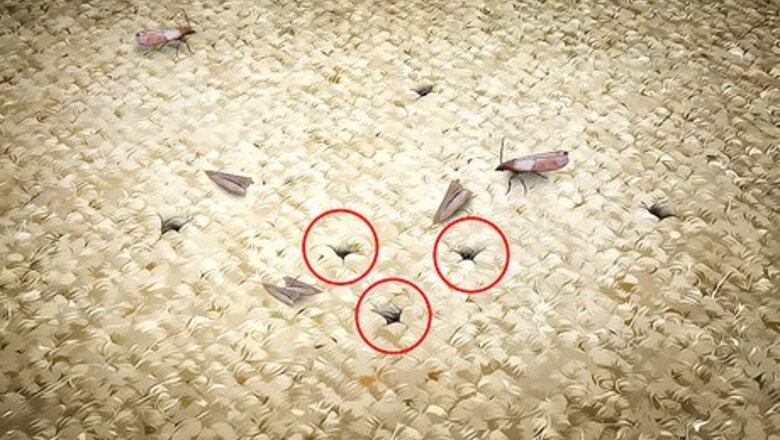
views
X
Research source
Treating Infestations
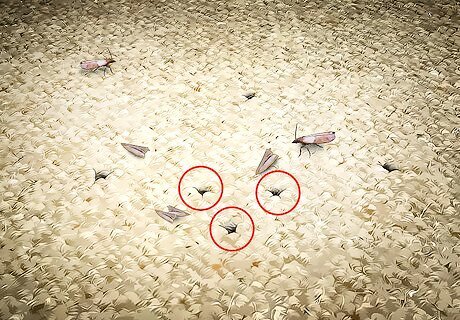
Locate the source of the infestation. You first step is to figure out where your moth infestation originated. Look for holes in any garments made out of animal fibers to try to find out where the moths have been leaving their eggs, since it's the larvae that feed on them after they hatch. Commonly what will happen is that someone buys a piece of secondhand clothing that's already been infested, thus transferring the infestation to their own closet. Depending on the source's financial and sentimental value as well as the extent of the infestation, you may either decide to have the item cleaned and repaired, or it may be more cost effective and safe for the rest of your wardrobe to simply dispose of the infested items.
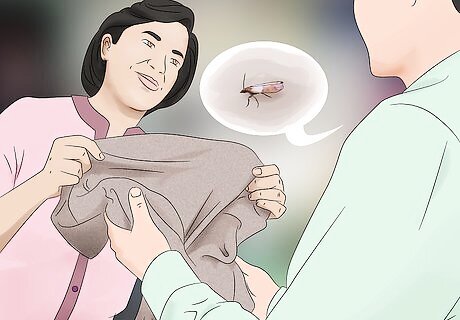
Clean your clothes. For items that are made of wool or animal products, this means taking them to the dry cleaner's. Let the workers know that you want the clothes cleaned specifically for moths so that they'll use chemicals that will kill moth eggs. Everything else needs to go into the wash with hot water, preferably around 120° Fahrenheit (roughly 49° Celsius), to be sure that any stray caterpillars are destroyed. Finish this process off by drying them in the sunlight, which is known to kill larvae.
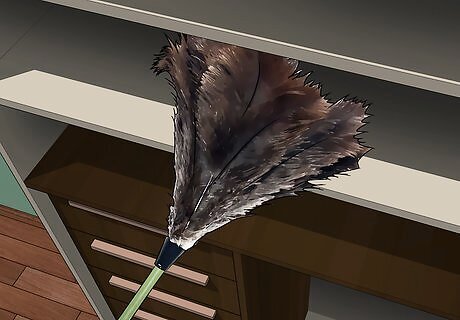
Clean your closet. After you've found the source and gotten your clothes cleaning underway, you need to clean your closet. Moths' eggs can end up in a whole host of places: your floor, the tops and bottoms of shelves, and even the ceiling. Do a thorough job of vacuuming and dusting, especially in the corners and any carpeted areas. Moth eggs can hide in carpet and under furniture, so it's very important that you thoroughly vacuum everywhere. Although you do not need to use a special spray for solid, wood surfaces where dusting is easy, there are special sprays that you can buy to use on your clothing and carpet to repel and kill moths. ContainerStore.com, GreenFibres.com, Lakeland.co.uk, and RoullierWhite.com all sell sprays ranging from $7.50 to $18.60 per bottle.
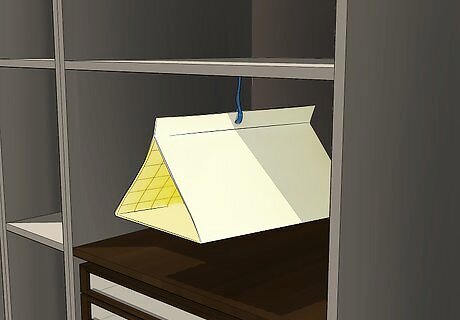
Use pheromone moth traps. These traps lure male moths to powder that contains the pheromones of female moths. This powder sticks to their wings and gives the male moths the false appearance of female moths. With both male and female moths confused as to who to breed with, the breeding cycle can be effectively ended.
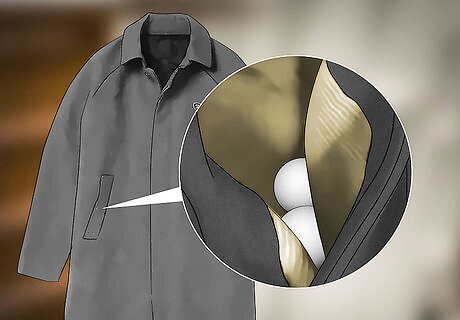
Use mothballs. Mothballs are an effective way to kill moths. They contain naphthalene, which is made from crude oil or coal tar, and turns from a solid to a toxic gas. When it's inhaled, it reacts with cells, breaking them down and damaging tissue. Items like coats that have pockets can be protected by putting mothballs in the pockets. Be careful: using mothballs around small children and pets is potentially very dangerous, especially if ingested. Clothing that has been stored with mothballs should be washed afterward to prevent anemia (when blood doesn't carry oxygen through the body) caused by naphthalene vapors. If you develop a headache, nausea, dizziness, or vomiting after being exposed to mothballs, discontinue using and dispose of the mothballs.
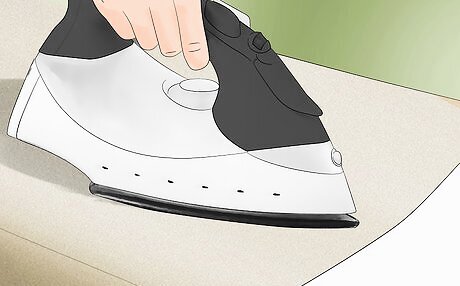
Iron your clothes. High temperatures will kill moth eggs and larvae. So using an iron, which applies direct, high heat to your clothing, will kill moth eggs and larvae clinging to your clothes. It is perfectly safe to iron your wool clothing unless the garment's tags say 'do not iron' or 'dry clean only.' If the clothing item can be ironed, set your iron to the 'wool' setting, use a steam heat, and press from the inside with a pressing cloth between the iron and your clothes.
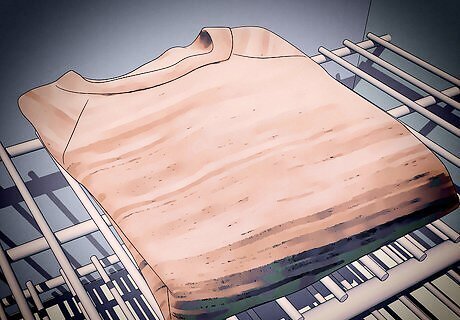
Freeze your wool. Sub-zero temperatures will kill any larvae or moths in any of their developing stages. If you live in a place that gets cold enough, you can leave your items outside for the day. Otherwise, you can pack them into the freezer for a few days without needing to pack them into plastic bags. Make sure if you've washed your clothes first that they are completely dry before freezing them or else you risk moisture turning into ice crystals on the cloth. Some sources indicate to freeze your clothes in plastic bags for a week to be sure any pests are completely dead.
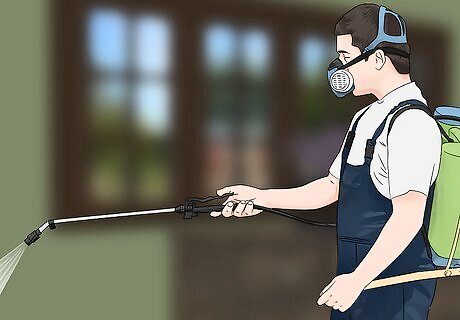
Fumigate. If all other efforts to rid your closet of a moth infestation fail, you can always turn to a professional pest control service for help. There are usually 24-hour emergency call out services available that you can use to book a last-minute appointment. While this method will most likely be the priciest, it will also probably be the most thorough. Reach out to a local fumigator by looking up pest control in your phonebook or doing an online search using keywords like "pest control near me." Try finding a number of services to compare pricing, and look to websites like Yelp or Angie's List for customer reviews. Be aware that if you choose to go with fumigation, they will most likely be using commercial pesticides. You and any children or pets you have may need to avoid any areas that have been fumigated for a day or more.
Preventing Infestations
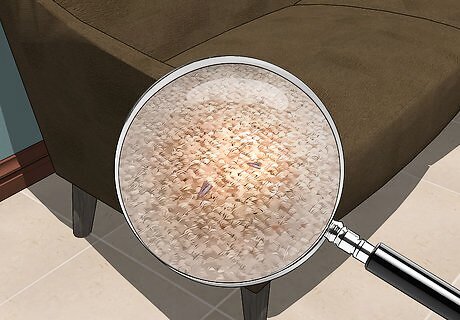
Inspect any recently purchased items. Especially if the item came from a secondhand store or a friend, regardless of the fiber content of the item, you should make sure there are no signs that the item is infested. It is possible that stray caterpillars could be attached to the clothing and end up hatching in your closet. In the United States, most infestations come from webbing clothes moths, but you should still inspect for both. Look for patches of silk webbing and feeding tube which webbing clothes moths leave behind. Casemaking moths' cases will change to match the color of the clothing they're eating. For this reason, you should always look for numerous, suspicious small holes as this your best warning sign for an infestation.

Keep your closet area clean. Frequently clean your closet from top to bottom; moths like to live in places where it's dark and they're undisturbed. Move things around: move your clothes out, wipe things down with detergent-soaked clothes, and vacuum the floors and drawers.

Keep your clothing clean. You might think that your clothes, particularly those made out of cotton and manmade fibers, will be okay as long as your wool is stored separately. But moths like to eat the tiny detritus left behind from human skin, like sweat, as well as food particles. Make sure your clothes have always been washed before they return to your closet space.
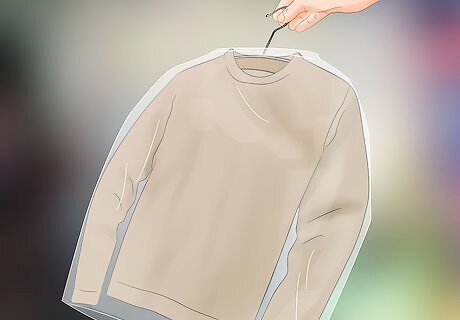
Store clothing in airtight containers. You can use vacuum sealing, ziplock bags, or even plastic containers with airtight lids to store your wool garments when you're not using them. This is particularly helpful in the spring and summer months. You can also line these spaces with anti-moth paper, cedar, or even mothballs to make them extra secure. Most if not all of these items should be available from Amazon, Bed Bath & Beyond, Target, or Walmart. Be careful: storing clothes in an airtight container can only keep new infestations from happening; if your clothing already has eggs on it, they'll hatch and eat the clothes anyway. Be sure you've properly cleaned your clothing first. Make sure the containers are also dry, as are your clothes, to prevent mold.
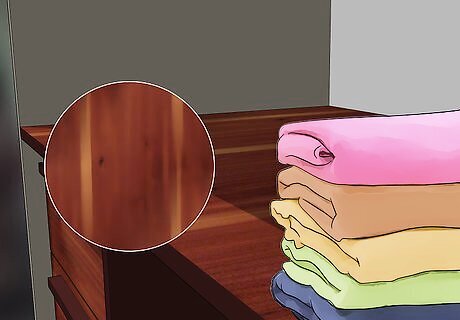
Use cedar. The strong smell of cedar helps to camouflage your clothes from moths. You can invest in cedar furniture to store clothing, but if that's too expensive, cedarwood hangers, cedarwood blocks, and even oil diffusers that use cedarwood's aromatic oils are affordable solutions. JCPenney, Bed Bath & Beyond, and Amazon will all carry them. There has been some limited evidence suggesting that Eastern Red Cedar (actually a juniper) contains an aromatic oil that, over time and with a sufficient enough concentration, will kill small moth larvae. However, a closet would provide too much air circulation to be lethal to larvae, and would probably only serve as a deterrent for the adult moths. Eastern Red cedar is only effective for a few years. After a while, the aromatic oil contained within the wood will evaporate, rendering it ineffective in a fight against moths.

Use natural, food-based repellents. It's long been thought that certain herbs and food products could protect your clothes from moths. The theory is that, for the same reason that cedar is effective (a very powerful odor), moths can be similarly kept at bay by other strong odors. In a recent experiment, researchers found that cinnamon, cloves, and lavender were all effective at keep moths from eating clothing. You can make sachets or put out a bowl of scented oil in your closet. Some aromatic herbs, like bay leaves, eucalyptus, lemon peel, and mint proved to be ineffective in the experiment, so be careful about which herbs you use. Beware that some of these scents are very difficult to get out of clothing, in case you or loved ones dislike or have any allergies to these plants.
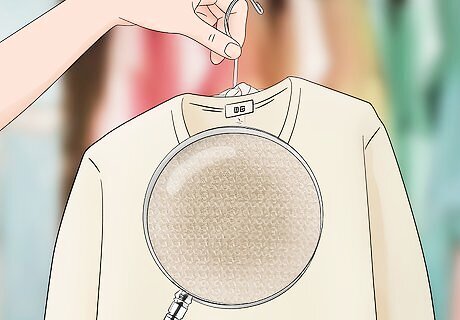
Periodically check your clothing. Whether you're trying to prevent an infestation from occurring for the first time, or trying to prevent one from recurring, you should check your clothing throughout the year. Look for signs of an infestation, which generally amount to suspicious and multiple holes in your clothing. Although this is particularly important during the months your clothes are not stored in plastic containers, it's also important to check at least once after you've stored them: adults live for about 75 to 80 days, and eggs hatch into larvae after 4-10 days. If moth eggs managed to make their way into the storage item and go unchecked, you may come back to ruined clothing months too late. Moving and shuffling your clothes around during this process is actually very helpful because moths do not like to lay their eggs in places that are frequently disturbed.




















Comments
0 comment